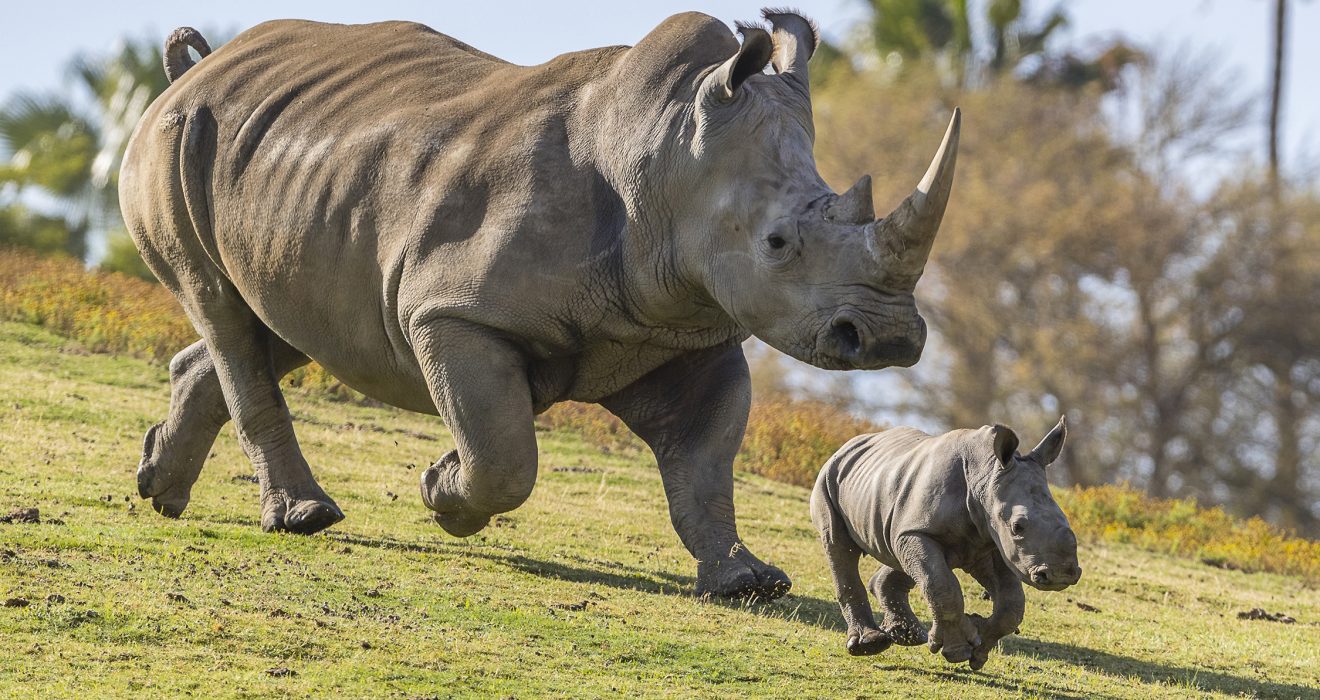The white rhino conservation is essential due to its threatened status and genetic diversity concerns. Advanced reproduction treatments, particularly IVF, are now critical to preserving and rejuvenating their population. Southern white rhinos were nearly extinct by the late nineteenth century, with populations as low as 20 animals due to widespread killing and habitat destruction. This extreme population bottleneck has put the species at risk of genetic oddities and illnesses, jeopardizing its long-term existence.
Zoos around Europe play an important role in preserving genetic variation across southern white rhinos via diligent breeding operations. Unlike wild populations, zoo populations gain from controlled breeding, which increases genetic variability.
Introduction of IVF in Rhino Conservation:
Recent advances in reproductive technologies have fueled confidence in the conservation sector. The world’s inaugural rhino IVF pregnancy, which occurred in January, entailed successfully implanting a lab-created rhino egg into a surrogate mother, representing a significant advancement in reproductive technology for endangered animals.
Case Study:
Zanta, a 22-year-old rhino in Dublin Zoo, shows the possibilities of IVF for conservation. Despite having exceptional genetics, Zanta cannot reproduce naturally. To overcome this limitation, fertility specialists from Germany’s Leibniz Institute for Zoo and Wildlife Research worked with Dublin Zoo to remove her eggs under anesthesia using modern procedures.
Zanta was given hormone injections to boost egg production while being closely monitored. Researchers used precise equipment and ultrasound guidance to find and remove eggs from her ovaries. These eggs, which are essential for genetic variety, were then produced in a laboratory setting.
Challenges and Progress:
Although IVF is still in its early stages for rhinos, the gathering of healthy embryos from throughout Europe shows promise. Despite challenges, such as the death of a surrogate mother from an unrelated virus during an early-stage gestation, scientists are enthusiastic about improving the procedure for larger conservation initiatives.
Besides southern white rhinos, the adoption of IVF technology has the potential to benefit the severely threatened northern white rhino. With only two females left globally, the Biorescue project intends to use similar reproductive improvements to save this subspecies from extinction.
Scientific Significance and Conservation Ethics:
Genetic Diversity and Public Health:
Maintaining a broad gene pool is critical for overall population health and disease resistance. Southern white rhinos in zoos have more genetic variability than their wild counterparts, which provides promise for long-term conservation through deliberate breeding and fertility treatment technologies.
Moral Considerations in Conservation Practices:
The ethical implications of reproductive technologies used in conservation involve combining scientific intervention with biological processes. Critics claim that such efforts may alter evolutionary pathways, while supporters underline the importance of averting irrevocable species loss.
Regulatory and Legal Frameworks:
International agreements and local regulations regulate the use of technologies for assisted reproduction for wildlife conservation. These frameworks seek to ensure ethical practices, preserve biodiversity, and the safeguarding of endangered species.
Genetic Variety and Conservation Challenges:
The value of genetic variety in preservation cannot be emphasized. A small gene pool reduces an animal population’s capacity to adjust to environmental shifts and battle rising dangers like disease outbreaks. A varied genetic base, on the other hand, boosts resilience and promotes long-term viability both of which are critical components of effective animal conservation efforts. Conservationists hope to reduce genetic risks and protect biological diversity for the next generation by combining IVF technologies and genetic management approaches.
Future Prospects:
Building on previously gathered biological resources, current initiatives focus on the establishment and preservation of embryonic banks derived from varied zoo populations. These repositories serve as a store of genetic potential, ready for future reintegration into wild settings or to strengthen captive breeding efforts. Conservationists anticipate a sustainable future in which southern white rhino numbers thrive in their native habitats, demonstrating the long-term impact of IVF technology on species preservation.
As Zanta recovers from anesthesia and starts her daily habits at Dublin Zoo, her unknowing influence on rhino conservation hits home. The eggs she contributed are more than just genetic material; they offer promise for the return of southern white rhinos globally. The conservation community works together, scientifically, and with unflinching passion to guarantee that these majestic beasts remain free to roam the African grasslands, embodying the adaptability and tenacity of extinction-threatened species.
Final Thoughts:
The struggle to save the southern white rhino demonstrates human resourcefulness and empathy in dealing with of environmental obstacles. Conservationists use IVF technology to pave the road for a healthier future one in which genetic diversity thrives and species on the edge of extinction retake their place in nature. Through continuous research, working together, and backing from the public, we can guarantee that the southern white rhino’s legacy lives on for years to come, influencing future conservation endeavors and celebrating worldwide animal preservation achievements.

